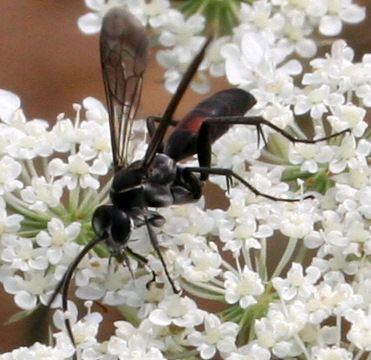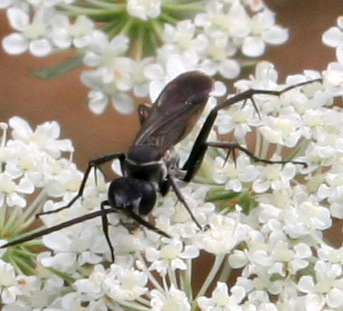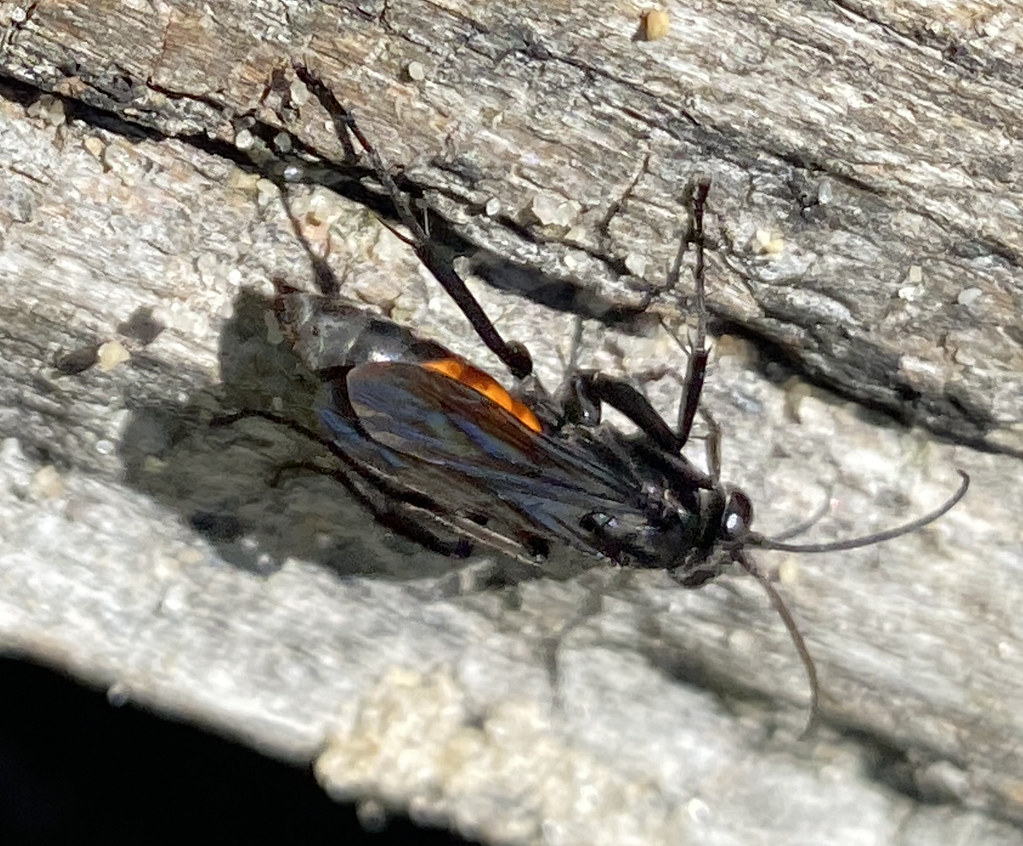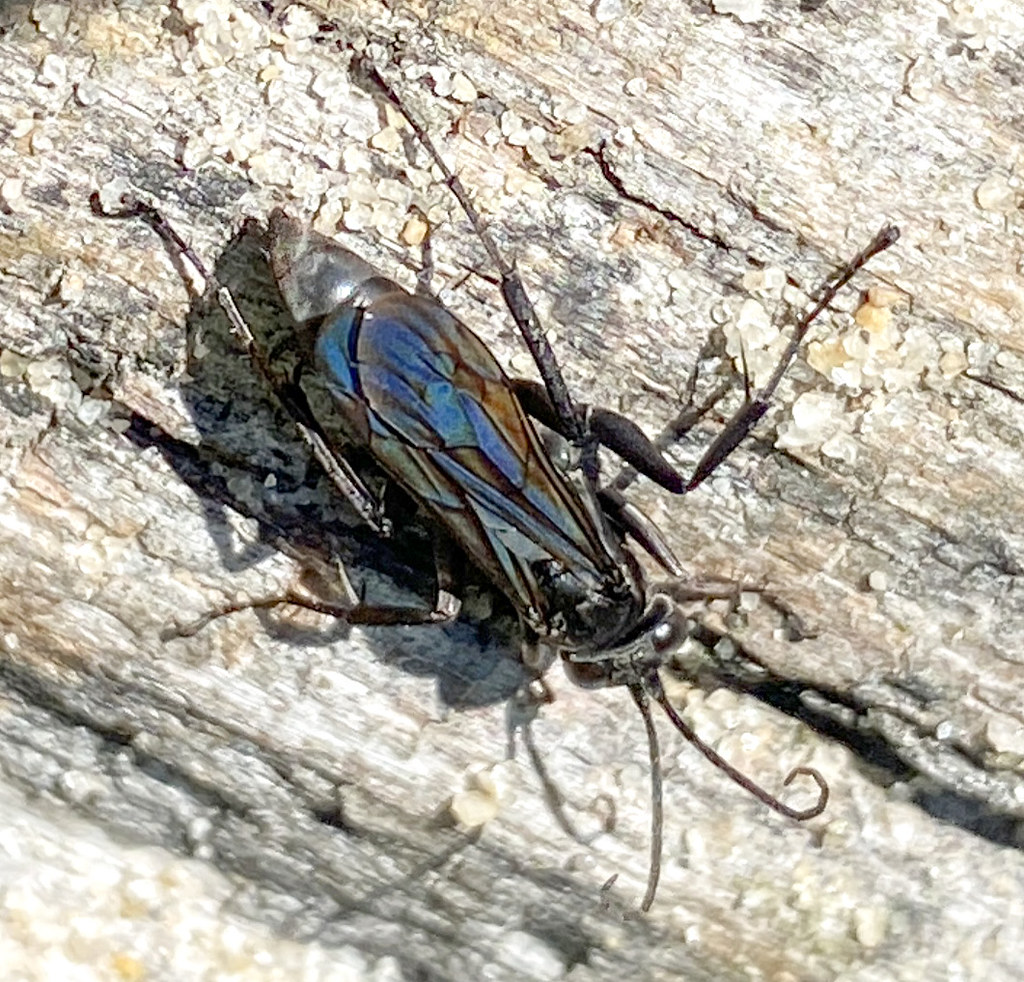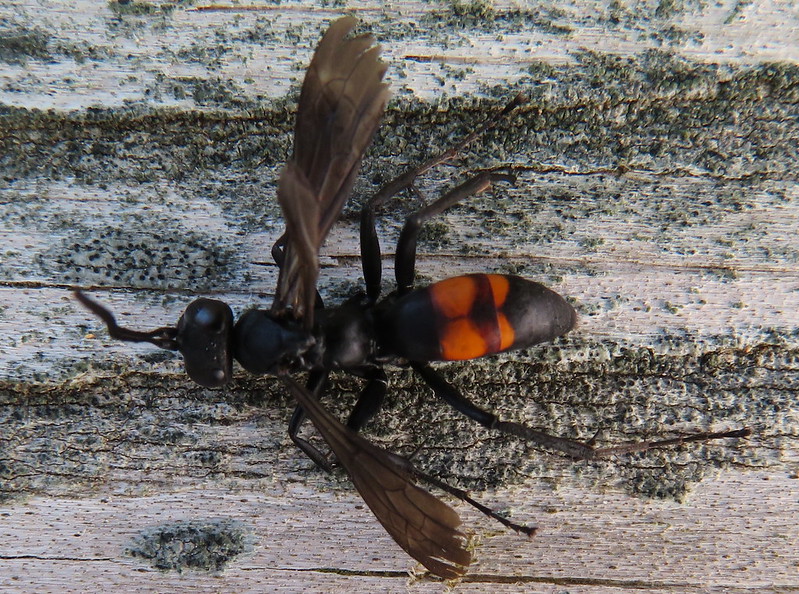Map Snapshot




3 Records
Seasonality Snapshot
Use of media featured on Maryland Biodiversity Project is only permitted with express permission of the photographer.
An Anoplius americanus in Baltimore City, Maryland (7/22/2009). Determined by Matthias Buck/BugGuide.
View Record Details
Media by
Thomas Wilson.
An Anoplius americanus in Baltimore City, Maryland (7/22/2009). Determined by Matthias Buck/BugGuide.
View Record Details
Media by
Thomas Wilson.
A female Anoplius americanus in Anne Arundel Co., Maryland (6/15/2021). Verified by Bob Biagi/BugGuide.
View Record Details
Media by
Lynn Strauss.
A female Anoplius americanus in Anne Arundel Co., Maryland (6/15/2021). Verified by Bob Biagi/BugGuide.
View Record Details
Media by
Lynn Strauss.
A deceased Anoplius americanus in Charles Co., Maryland (6/30/2022). Determined by Bob Biagi/BugGuide.
View Record Details
Media by
Julie Simpson.
Source: Wikipedia
| Anoplius americanus | |
|---|---|

| |
| Anoplius americanus, Big Cypress National Preserve, Ochopee, Florida | |
| Scientific classification | |
| Domain: | Eukaryota |
| Kingdom: | Animalia |
| Phylum: | Arthropoda |
| Class: | Insecta |
| Order: | Hymenoptera |
| Family: | Pompilidae |
| Genus: | Anoplius |
| Species: | A. americanus
|
| Binomial name | |
| Anoplius americanus | |
Anoplius americanus is a species of blue-black spider wasp which is widely distributed in the New World.
Description
[edit]Anoplius americanus is approximately 20 mm in length. It is almost completely black, except for bright orange spots on the second and third segments on the abdomen which are specifically distinct.[2]
Habitat and Ecology
[edit]Adults have been observed nectaring on flowers of the families Apiaceae, Asteraceae, Lamiaceae and Polygonaceae.[3] Like other members of the genus Anoplius the predominant prey is likely to be wolf spiders of the family Lycosidae.
Distribution
[edit]Anoplius americanus can be found in North America, Central America,[4][5] and the West Indies.[6][7]
References
[edit]- ^ "Anoplius americanus (Beauvois)". GBIF.org. 2016. Retrieved 8 April 2017.
- ^ "ANOPLIUS AMERICANUS". Fontenelle Forest. Retrieved 28 August 2016.
- ^ "Flowering Plants Visited by Anoplius americanus". John Hilty. Retrieved 28 August 2016.
- ^ "Insects of Panamá". Arizona State University. Archived from the original on 20 December 2016. Retrieved 28 August 2016.
- ^ Vaonoye-Eligio, Maximiliano; Melendez Ramirez, Virginia; Ayala, Ricardo; Navarro, Jorge; Delfin-Gonzales, Hugo (2014). "Predatory Wasps (Hymenoptera of the Yucatan Peninsula". Southwestern Entomologist Perspectives. 39 (3): 635–646.
- ^ .Starr, Christopher K.; Hook, Allan W (2003). "The aculeate Hymenoptera of Trinidad, West Indies" (PDF). Occasional Papers of the Department of Life Sciences, University of the West Indies. 12: 1–31.
- ^ Waichert, Cecilia; Rodriguez, Juanita; von Dolen, Carol; Pitts, James P. (2012). "The Spider Wasps (Hymenoptera: Pompilidae) of the Dominican Republic". Zootaxa. 3353: 1–47.
